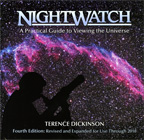Magazines, Magazines, Magazines... Wait, there's only two magazines.
If you're on the fence about Astronomy, or curious about what it is, it can be an overwhelmingly difficult subject to tackle. There are so many different aspects of it, that finding information about what you're interested in, or just trying to get a general idea of it can be daunting. Are you interested in sketching, astrophotography, viewing the planets in our solar system, viewing deep sky objects like the Horsehead Nebula? Do you want to dedicate a few minutes each evening, or spend hours outside at night? Just typing all that is enough to make my head spin, All simple questions, but all quite complex when you realize that each one can have thousands of hours (and dollars) invested in it.
When I started, I just wanted to see what was out there and learn the night sky. It all seemed pretty simple. Little did I know that not only are there numerous subcategories of Amateur Astronomy, each one of those subcategories can also have numerous subcategories. The great thing is, you don't have to do it all. You don't even have to do most of it. Do what you like it. To steal from Hemingway, it's a moveable feast where you can dabble in one area before sampling the next, trying it all and deciding what's interesting to you.
Two fantastic resources that I've found are Sky and Telescope and Astronomy magazines. Both are cheap, accessible for the beginner, and available almost anywhere that has a decent magazine rack.
I don't favor either one, and have subscribed to both. They both do a great job of covering as much of the 'moveable feast' as is possible, all while making it accessible to everyone.
I recommend these to anyone who has an inkling that they may be interested in Amateur Astronomy. What they both do really well is explaining and introducing the topics and aspects of the hobby. Not only do they help in building a general knowledge of the hobby, but also for exposing yourself to the aspects you may have had little interest in. Always a good thing, I think, because if you don't know about something, maybe you're missing out on something that might be right up your alley.
Both magazines have extensive websites with free articles, guides, and knowledge bases. Definitely worth checking out, even if you don't get the magazines themselves.
If Amateur Astronomy really is like Hemingway's moveable feast, think of these as the menu boards.
When I started, I just wanted to see what was out there and learn the night sky. It all seemed pretty simple. Little did I know that not only are there numerous subcategories of Amateur Astronomy, each one of those subcategories can also have numerous subcategories. The great thing is, you don't have to do it all. You don't even have to do most of it. Do what you like it. To steal from Hemingway, it's a moveable feast where you can dabble in one area before sampling the next, trying it all and deciding what's interesting to you.
Two fantastic resources that I've found are Sky and Telescope and Astronomy magazines. Both are cheap, accessible for the beginner, and available almost anywhere that has a decent magazine rack.
I don't favor either one, and have subscribed to both. They both do a great job of covering as much of the 'moveable feast' as is possible, all while making it accessible to everyone.
I recommend these to anyone who has an inkling that they may be interested in Amateur Astronomy. What they both do really well is explaining and introducing the topics and aspects of the hobby. Not only do they help in building a general knowledge of the hobby, but also for exposing yourself to the aspects you may have had little interest in. Always a good thing, I think, because if you don't know about something, maybe you're missing out on something that might be right up your alley.
Both magazines have extensive websites with free articles, guides, and knowledge bases. Definitely worth checking out, even if you don't get the magazines themselves.
If Amateur Astronomy really is like Hemingway's moveable feast, think of these as the menu boards.




Comments
Post a Comment